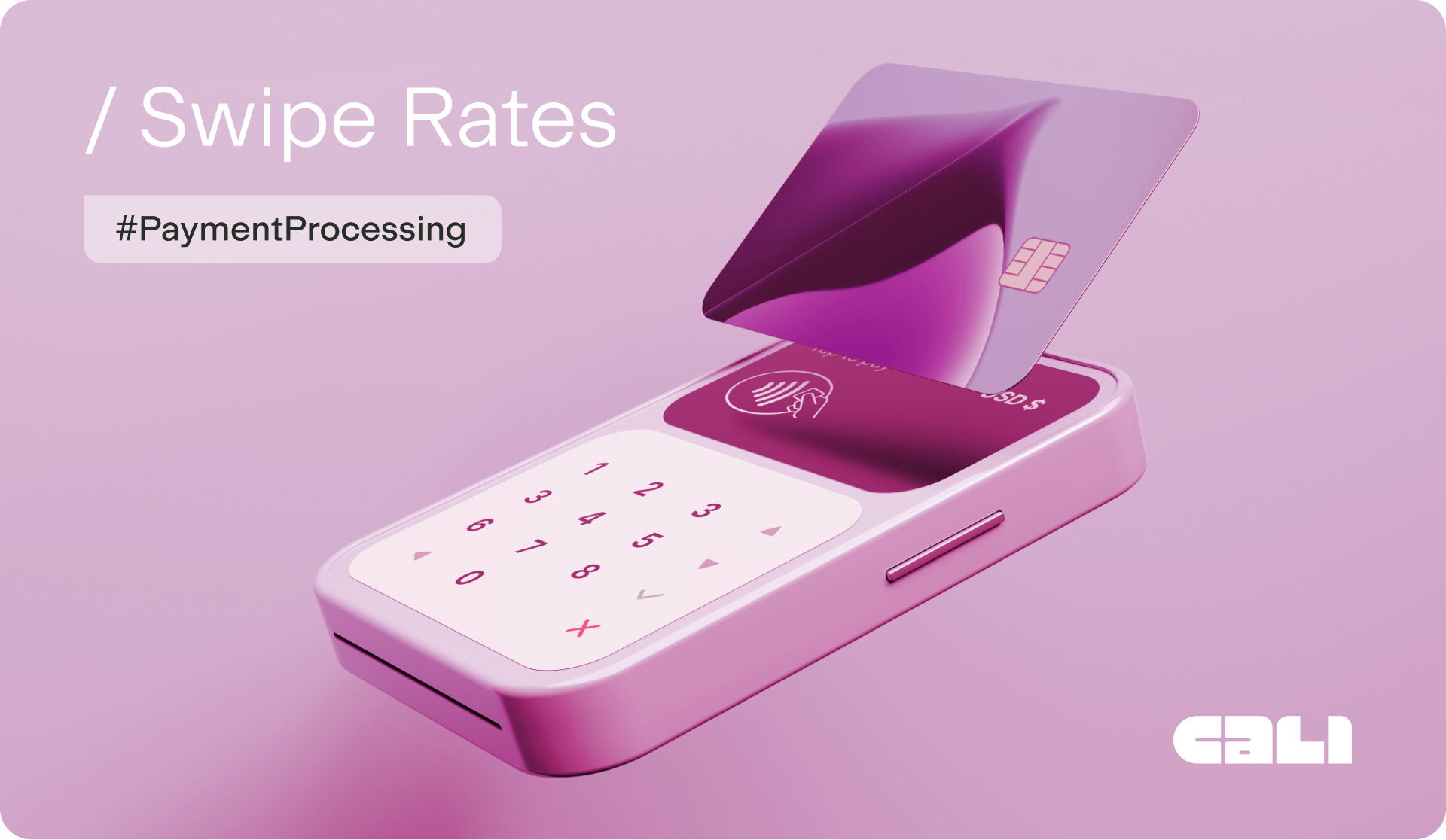
Credit and Debit Card Processing Fees: What Merchants Need toKnow
Payment Processing Fees Explained: Interchange, Scheme, and Acquirer Costs
When merchants talk to us, the very first question is almost always the same:
“What are your fees?”
And it’s a valid question. Payment processing fees can have a major impact on margins.
The honest answer? It depends.
That may sound frustrating at first, but the reality is that processing costs depend on many factors: the type of card, the region, the size of your business, and even on the way you choose to structure your pricing. Let’s break it down.
What makes up a card transaction cost?
There are three main elements:
- Interchange
- Scheme fees
- Acquirer fee
Interchange fee explained
Interchange is the fee charged to the card acquirer and withheld by the schemes (Visa, Mastercard), and paid to the issuer of the customer’s card. The interchange depends on the type of the card (debit, credit, corporate), it depends on the business of the merchant (supermarkets will have lower interchange than retail boutique selling luxury goods), on the region (whether the transaction is domestic, or international, or e.g. within Europe ) and so on.
In short: merchants bear this cost in favor of your end customer’s bank for issuing the card
What are the Scheme Fees ?
Scheme fees are charged by the card networks on every transaction. They typicallyinclude authorization, clearing, and settlement fees, along with surcharges for factors like cross-border transactions, card-not present payments, or high-risk categories.
They can be fixed (in currency units), percentage, or both.
The complexity of those fees depends on the Card network itself. Mastercard has a more complicated structure, than, for example, JCB, that would just charge a stable percentage per transaction.
What is an Acquirer Fee?
This is the fee that your payment provider actually earns.
And the level of that fee would depend on variety of factors, such as – the size of the merchant (the bigger the volume, the lower the fee), the risk profile (susceptibility of chargebacks, declines, amount of additional screening required for higher risk), etc. And of course, the negotiation skills of both parties.
Acquirer fees can range from 0.2% to over 2%, depending on size and risk profile.
IC++ explained
Large merchants with dedicated finance teams often prefer IC++ pricing (interchange + scheme fee + acquirer fee).
The benefit of this pricing is of course, transparency, and efficiency, because the costs of for example, only on interchange debit card would reach 0.2%-0.3% as opposed to 1.5% on a standard credit card (gets even more expensive on a premium card). Cons would mainly revolve around complicated reconciliation. When it’s a flat fee, it’s very easy to check and reconcile the amounts that are processed to the settlements received.
In short, choice of a settlement model is a tradeoff between transparency and simplicity of the process.
As an alternative, a flat or blended rate is applied. If pricing doesn’t follow IC++, acquirers typically build in a flat rate to cover the costs. Acquirer would need to understand merchant’s historic data of transactions to simulate the expected average cost, and work from there.
Other Factors That Affect Fees
- Government Caps: In some regions (like the EU), regulators impose caps on interchange fees, especially for debit cards. This can significantly lower overall costs.
- Domestic vs. Cross-Border: Domestic transactions are generally cheaper. Cross-border transactions add extra scheme charges and, in some cases, cross-currency fees.
- Additional Tools: Services like 3DS (Europe), Apple Pay/Google Pay, or anti-fraud screening usually carry additional per-transaction charges. While they add cost, they also reduce disputes and improve your risk profile.
- Minimum Fees: Some providers impose a minimum monthly fee to ensure a stable baseline of expected turnover. This protects the provider but can be costly for smaller merchants.
- Setup Fees: Depending on the provider, there may be a one-time setup or integration fee. These can range from simple account activation costs to more significant charges for custom integrations.
How to Estimate Your Real Payment Processing Fees
The actual cost you’ll pay depends on:
- The types of cards your customers use
- Where your customers are located
- Your transaction volumes
- The pricing model (IC++ or flat)
Some merchants benefit from the clarity of IC++, while others prefer the simplicity of a flat rate. The right choice depends on your business.
Final Thought
When comparing providers, don’t stop at the headline fee. The real cost comes from how your unique transaction profile interacts with interchange, scheme fees, and acquirer margins.
While we are working on a tool that will soon be available online to design your custom fee proposal, want to calculate your real payment processing fees? Get in touch with our team to model your transaction profile and design the right plan


